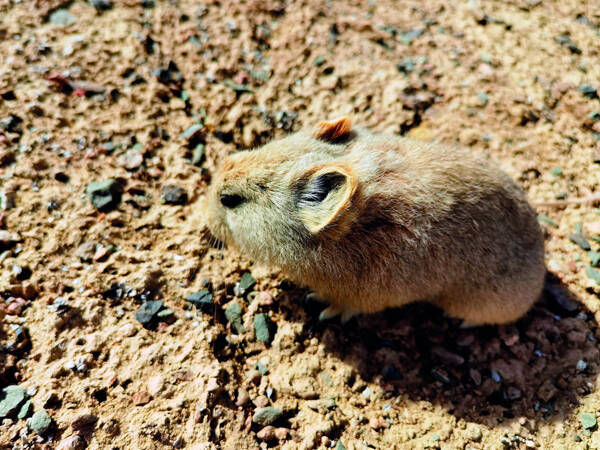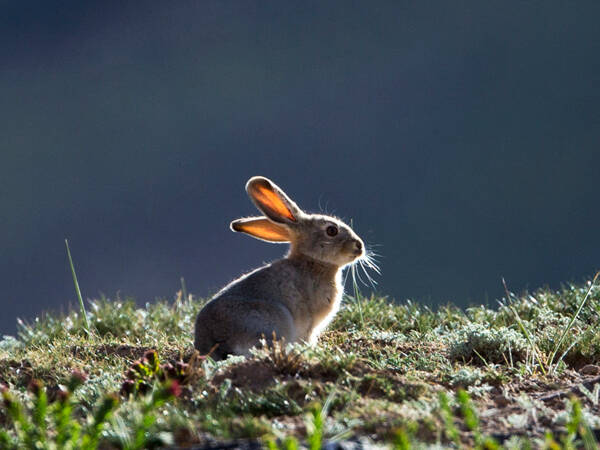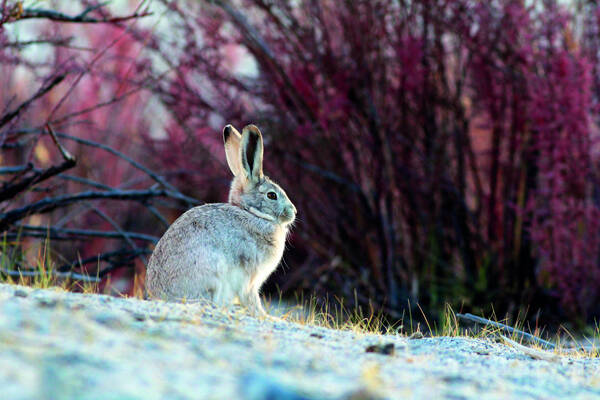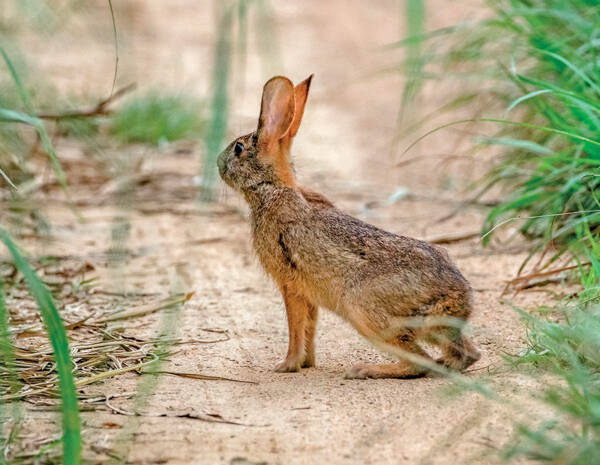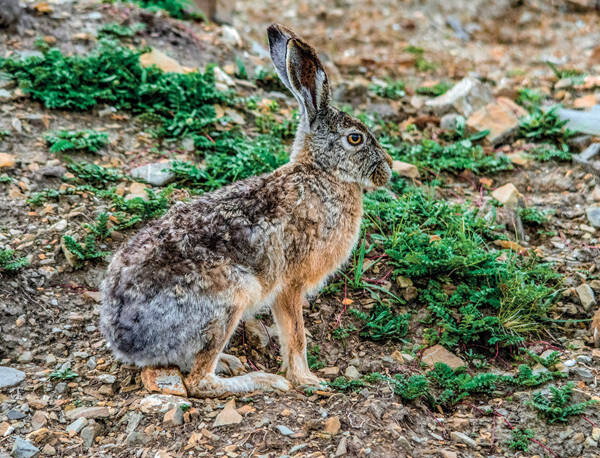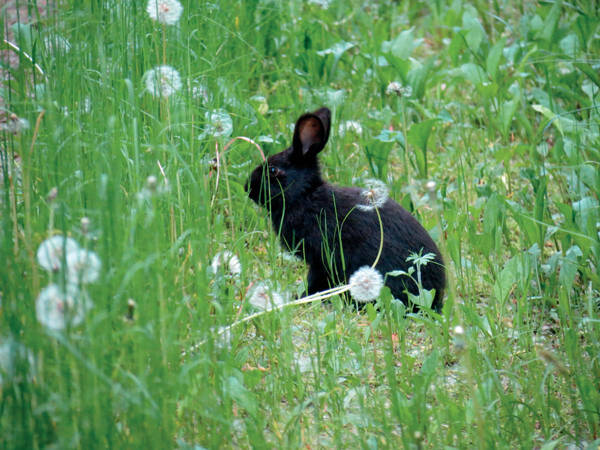Lepus timidus
IUCN
LCBasic Information
Scientific classification
- name:Lepus timidus
- Scientific Name:Lepus timidus,Mountain hare,White rabbit, color-changing rabbit, blue rabbit
- Outline:Lagoiformes
- Family:Lepus
Vital signs
- length:46-65
- Weight:2-6kg
- lifetime:10-13years
Feature
It is the only wild rabbit in China whose fur turns white in winter.
Distribution and Habitat
Snow hares were widely distributed in Europe during the Ice Age, and later migrated as the glaciers retreated.
Distributed in Austria, Belarus, China (Heilongjiang, Inner Mongolia), Estonia, Finland, France, Germany, Ireland, Italy, Japan, Kazakhstan, Latvia, Liechtenstein, Lithuania, Mongolia, Norway, Poland, Russia, Slovenia, Sweden, Switzerland, Ukraine, United Kingdom (Great Britain, Northern Ireland), Denmark
Inhabits the edge of swamps in temperate or subarctic coniferous forests, reeds in river valleys, willows and poplar forests, and is one of the representative animals of the boreal and subarctic forests.
Appearance
The body of the snow rabbit is slightly larger than that of the grass rabbit. The body length is 46-65cm, the tail length is 4.3-8cm, and the weight is 2-6kg. The ears are shorter than those of domestic rabbits. This is because in cold areas, not only do they not need large ears full of capillaries to dissipate heat, but they also need to keep their ears tightly against their backs to conserve heat. Its eyes are large and placed on both sides of its head, providing it with a wide range of vision. It can look forward, backward, sideways and upward at the same time, which can be said to be able to see in all directions. But the only drawback is that the distance between its eyes is too large, so it has to move its face left and right to see objects clearly. When running fast, it often does not have time to turn its face, so it often bumps into walls and trees. The fable of "waiting for the rabbit by the tree stump" is probably based on this. Its tail is short, wide, and slightl
Details
The snow hare is called Mountain hare in English, and there are 25 subspecies.
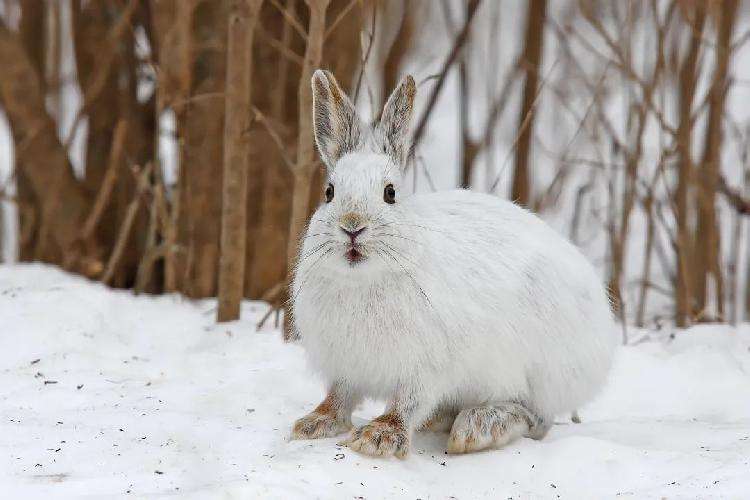
Snow hares generally act alone except during the estrus period. During the day, it hides in simple caves under bushes, hollows and fallen trees, which are covered with dead branches and leaves and its own shed hair. It comes out in the early morning, dusk and at night. Its nest is not fixed, so there is a saying that "a cunning rabbit has three burrows". It never moves along its own footprints, but always takes a roundabout way to enter its nest. When it approaches the nest, it first walks around in circles, observes and listens carefully, and then slowly retreats into the nest.
The snow rabbit is cunning and alert, and its movements are irregular. When it moves, it usually listens quietly to decide where to go. Before leaving the nest, it creates an illusion to confuse its natural enemies so that the rabbit nest will not be discovered by natural enemies. Its sense of smell is very sensitive, and its nest is usually in a slightly ventilated place. When it sleeps, its nose is facing upwards so that it can smell the smell of natural enemies drifting in the wind at any time, and its two ears are also vigilant to listen to any abnormal sounds. After heavy snowfall in winter, it digs caves more than one meter deep to live in, and forms crisscross tracks on the snow. When in danger, its eyes are wide open, its ears are pressed against its back, and it crouches low. It often avoids attacks from natural enemies because of its protective coloration similar to the environment. Snow rabbits are good at jumping and climbing, and are also suitable for walking on the snow. They usually jump slowly, and when frightened, they jump up and disappear without a trace in an instant. When running fast, it can jump more than 3 meters away, with a speed of about 50 kilometers per hour, making it one of the fastest wild animals in the world. When running, it often jumps into the air, up to more than 1 meter, so as to observe the surrounding movements and then determine the direction of escape. When running, it can also suddenly stop, turn sharply or run back to get rid of the pursuit of natural enemies.
Snow hares are herbivores, and their main food is leaves, wood, bark, stems and mosses, but their food varies in different seasons and places of residence. In summer, the food of snow hares living in the forest is mainly leaves and branches; the main food of snow hares living in the tundra is alpine plants, and the main food of snow hares living in the plains is grass, lichens and bark. In winter, when most of the food is buried under the snow, heather is the main food source for snow hares.
Snow hares are usually timid and gentle, but when it comes to the mating season from March to May, they are out of character and no longer as cautious and hidden as usual. They become extremely active and run around all day looking for mates. In order to win the favor of female rabbits, male animals often jump and play, and make all kinds of weird movements when jumping. This is what the proverb says "crazy as a hare in March". During this period, each female is followed by several males. Sometimes six or seven males compete for a female and fight fiercely. They stand on their hind legs, hit each other with their front paws, or wrestle and bite each other. The male who wins can mate with the female.
Snow rabbits reproduce 2-3 times a year, with a gestation period of about 50 days, and 2-10 pups per litter, with 2-5 pups being the most common. Newborn pups are covered with dense hair and weigh 90-120g. Unlike domestic rabbits, they can open their eyes after birth, start to live independently after 20 days, and reach sexual maturity in 9-11 months.
As the fur color of snow rabbits changes with the seasons, it is the only wild rabbit that turns white in winter. It is very ornamental and there are no snow rabbit products on the market. Therefore, poaching, smuggling and illegal trading of snow rabbits are very serious. The number of wild populations in China needs further investigation. According to data from 1977 to 1979, it is estimated that the number of snow rabbits distributed in the Greater Khingan Range area can reach tens of thousands. In the early 1980s, the Greater Khingan Range forest area purchased about 6,000 to 7,000 snow rabbit skins each year. In China, there are existing protected areas: Huzhong (Heilongjiang), Qixinglazi (Heilongjiang), Liansanpao (Heilongjiang), and Kanas National Nature Reserve in the Altai Mountains of Xinjiang.
Listed as a second-class protected animal in China.
Listed in the 2008 Red List of Threatened Species of the World Conservation Union (IUCN) ver 3.1 - Least Concern (LC).
Listed in Appendix I of the Convention on International Trade in Endangered Species (CITES).
Listed in the China Biodiversity Red List - Vertebrate Volume, with an assessment level of Vulnerable (VU).
Listed in the second level of the List of National Key Protected Wildlife in China.
Protect wild animals and stop eating game.
Maintaining ecological balance is everyone's responsibility!

